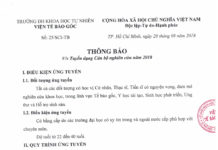Stem Cells in Clinic and Research
Book edited by Ali Gholamrezanezhad
Published: August 23, 2011 under CC BY-NC-SA 3.0 license.
Chapter 22: Stem Cell Therapy for Islet Regeneration
By Phuc Pham Van
DOI: 10.5772/17588
Based on our current understanding of cell biology and strong supporting evidence from previous experiences, different types of human stem cell populations are capable of undergoing differentiation or trans-differentiation into functionally and biologically active cells for use in therapeutic purposes. So far, progress regarding the use of both in vitro and in vivo regenerative medicine models already offers hope for the application of different types of stem cells as a powerful new therapeutic option to treat different diseases that were previously considered to be untreatable. Remarkable achievements in cell biology resulting in the isolation and characterization of various stem cells and progenitor cells has increased the expectation for the development of a new approach to the treatment of genetic and developmental human diseases. Due to the fact that currently stem cells and umbilical cord banks are so strictly defined and available, it seems that this mission is investigationally more practical than in the past. On the other hand, studies performed on stem cells, targeting their conversion into functionally mature tissue, are not necessarily seeking to result in the clinical application of the differentiated cells; In fact, still one of the important goals of these studies is to get acquainted with the natural process of development of mature cells from their immature progenitors during the embryonic period onwards, which can produce valuable results as knowledge of the developmental processes during embryogenesis. For example, the cellular and molecular mechanisms leading to mature and adult cells developmental abnormalities are relatively unknown. This lack of understanding stems from the lack of a good model system to study cell development and differentiation. Hence, the knowledge reached through these studies can prove to be a breakthrough in preventing developmental disorders. Meanwhile, many researchers conduct these studies to understand the molecular and cellular basis of cancer development. The fact that cancer is one of the leading causes of death throughout the world, highlights the importance of these researches in the fields of biology and medicine.
Introduction
Diabetes mellitus is an endocrine disorder characterised by inadequate production or use of insulin, resulting in abnormally high blood glucose levels. High blood glucose leads to the formation of reactive advanced glycation end-products (Feldman et al., 1997), which are responsible for complications such as blindness, kidney failure, cardiovascular disease, stroke, neuropathy and vascular dysfunction. Diabetes mellitus is classified as either type 1 or type 2. Type 1 diabetes mellitus (insulin-dependent diabetes mellitus) results from the autoimmune destruction of the pancreatic beta cells, whereas type 2 diabetes mellitus (non-insulin-dependent diabetes mellitus) results from insulin resistance and impaired glucose tolerance.
Approximately 7.8% (23.6 million people) of the US population has been diagnosed with diabetes mellitus, and another 57 million people are likely to develop diabetes mellitus in the coming years (American Diabetes Association, 2007). The number of people with diabetes mellitus is set to continue to rapidly increase between now and 2030, especially in developing countries.
Over the last decade, a new form of treatment called islet transplantation therapy was thought to provide good patient outcomes; however, few islets are available for transplantation. Typically, the pooled islets isolated from two pancreases are enough to treat a single patient. Since the enormous potential of stem cells was discovered, it was hoped that they would provide the most effective treatment for diabetes mellitus. Over the past two decades, hundreds of studies have looked at the potential of stem cell therapy for treating diabetes mellitus. Successful stem cell therapy would eliminate the cause of the disease and lead to stable, long-term results; hence, the term “pancreatic regeneration” was coined. The hypothesis was that stem cells could regenerate the damaged pancreas. After careful consideration of the aetiology of diabetes mellitus, scientists have put forward two general treatment strategies: stem cell therapy to treat the autoimmune aspect of the disease, and stem cell therapy to treat the degenerative aspect of the disease. In this review, we focus on stem cell-based therapies aimed at islet regeneration through stem cell or insulin-producing cell (IPC) transplantation. We will also discuss the latest strategies for treating both type 1 and type 2 diabetes mellitus using stem cell therapy, along with the (initially promising) results.



